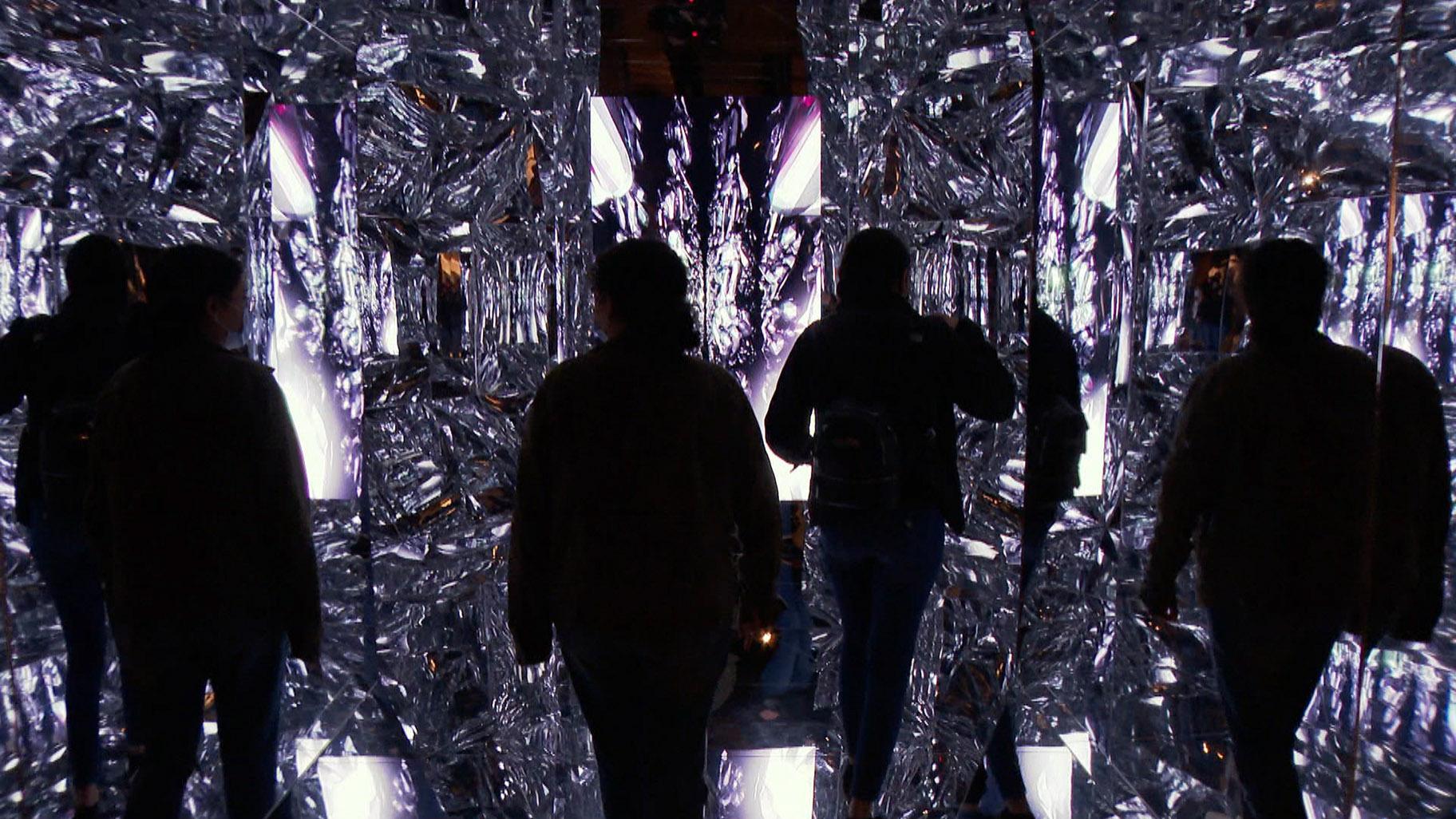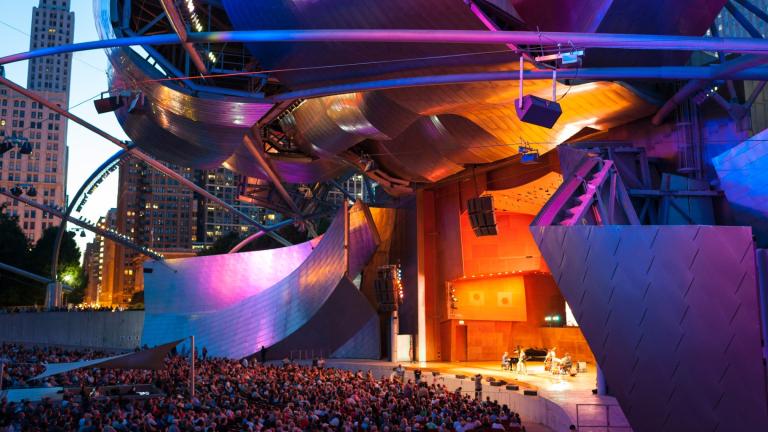Imagine an infinity room filled with mirrors. At the center sits a monitor displaying digital art, that projects moving images across the room. You have just entered the “Quantum Mirror.” Those digitized moving images are known as NFTs or non-fungible tokens. Traditionally, artists have had trouble monitoring the use of their work online. But NFTs allow artists to create a digital tracker that accompanies their work wherever it’s sent.
“I get to choose how ownership is transferred whether it be partial or with royalties,” said designer and creator of the “Quantum Mirror”, Adrian Stein. “The artist has a lot of consent and power in this transaction which is why it’s so groundbreaking.”
“Quantum Mirror” is on display at the Artspace 8 Gallery on Michigan Avenue. Stein says the piece is a metaphor for how one’s life can be entangled within technology. And, because this room of mirrors allows this NFT to fully encompass a physical space, that makes “Quantum Mirror” the very first NFT sculpture.
 Because this room of mirrors allows this NFT to fully encompass a physical space, that makes “Quantum Mirror” the very first NFT sculpture. (WTTW News)
Because this room of mirrors allows this NFT to fully encompass a physical space, that makes “Quantum Mirror” the very first NFT sculpture. (WTTW News)
READ: The Digital Art Making Millions: What Are NFTs?
“A sculpture is any 3D art,” co-creator Zach Hall said. “These mirrors create a 3D world that exists around the NFTs and the NFTs are the core of it that are projected and reflected into infinity. This piece is the same as what’s happening inside ‘Quantum Mirror.’ It’s here to demonstrate what an NFT is and what a physical object is and prompt that conversation.”
Just like NFTs encourage artists to have agency over their work, the “Quantum Mirror” exhibit encourages viewers to have agency over themselves and recognize how outside influences can inhibit that.
“The animations in ‘Quantum Mirror’ are infinite repetitions of bodies in the same way social media is creating infinite repetitions of an aesthetic influence or idea to the point where people are losing their originality,” Stein said. “We need to be aware of the fact that that is happening to our consciousness because when not aware, our code is cracked, and we become influenced by the screens in a way that changes our world around us so much that we’re not even able to tell right from wrong anymore.”
For more information, visit the exhibit website.
Follow Angel Idowu on Twitter: @angelidowu3
Angel Idowu is the JCS Fund of the DuPage Foundation Arts Correspondent.







